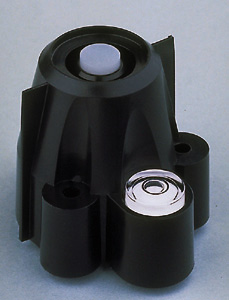 |
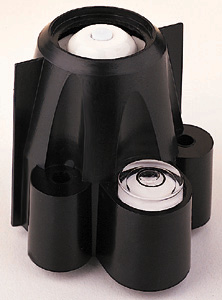 |
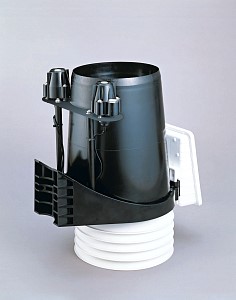 |
Solar Radiation Sensor
Measures solar radiation and is required (along with an anemometer and
a temperature/humidity sensor) if you wish to monitor evapotranspiration.
Diffuser element and housing are carefully designed for accurate
cosine response. Silicon photo diode provides good match to solar spectrum.
Two-piece housing minimizes radiation heating, allows convection cooling of
the sensor, and prevents the trapping of water or dust. Includes built-in
level and 3' (0.9 m) cable.
|
UV Sensor
Measures the sunburning portion of the UV spectrum. Allows you to
display UV index, dose rate, and daily and accumulated dose.
Multi-layer filter provides a spectral response that closely matches
the Erythema Action Spectrum. Diffuser provides excellent cosine response.
Two-piece housing minimizes radiation heating, allows convection cooling of
the sensor, and prevents the trapping of water or dust. Includes built-in
level and 3' (0.9 m) cable.
|
Sensor Mounting Shelf
For mounting solar radiation sensor and/or UV sensor on Vantage Pro
and Vantage Pro2 integrated sensor suite. Rigid shelf with anodized aluminum
posts and stainless steel hardware attaches easily next to the rain
collector on the outside of the integrated sensor suite.
|
UV (Ultra Violet) Radiation
Energy from the sun reaches the earth as visible, infrared,
and ultraviolet (UV) rays. Exposure to UV rays can cause numerous health
problems, such as sunburn, skin cancer, skin aging, cataracts, and can suppress
the immune system. The Vantage Pro2 helps analyze the changing levels of
UV radiation and can advise of situations where exposure is particularly
unacceptable. UV radiation requires the UV radiation sensor. The Vantage Pro2
displays UV readings in two scales: MEDs and UV Index.
Note: The stationís UV readings do not take into account UV
reflected off snow, sand, or water, which can significantly increase your
exposure. Nor do your UV readings take into account the dangers of prolonged UV
exposure. The readings do not suggest that any amount of exposure is safe or
healthful. Do not use the Vantage Pro2 to determine the amount of UV radiation
to which you expose yourself. Scientific evidence suggests that UV exposure
should be avoided and that even low UV doses can be harmful.
UV MEDs
MED (Minimum Erythemal Dose) is defined as the amount of
sunlight exposure necessary to induce a barely perceptible redness of the skin
within 24 hours after sun exposure. In other words, exposure to 1 MED will
result in a reddening of the skin. Because different skin types burn at
different rates, 1 MED for persons with very dark skin is different from 1 MED
for persons with very light skin.
Both the U.S. Environmental Protection Agency (EPA) and
Environment Canada have developed skin type categories correlating
characteristics of skin with rates of sunburn.
TABLE A-1: EPA SKIN PHOTOTYPES
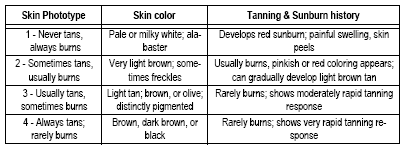
UV Index
Vantage Pro2 can also display UV Index, an intensity
measurement first defined by Environment Canada and since been adopted by the
World Meteorological Organization. UV Index assigns a number between 0 and 16 to
the current UV intensity. The US EPA categorizes the Index values as shown in
table A-3. The lower the number, the lower the danger of sunburn. The Index
value published by the U.S. National Weather Service is a forecast of the next
dayís noontime UV intensity. The index values displayed by the Vantage Pro2 are
real-time measurements.
Table A-2: ENVIRONMENT CANADA SKIN TYPES AND REACTION TO THE SUN
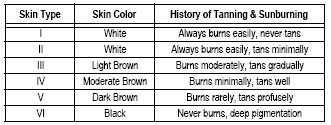
a. Developed by T. B. Fitzpatrick of the Harvard Medical
School. More about the Fitzpatrick Skin Types is available in: Fitzpatrick TB.
Editorial: the validity and practicality of sun-reactive skin types I through
VI. Arch Dermatol 1988; 124:869-871
UV Dose and Sunburn - Use this plot to estimate the MED dose
leading to sunburn. A person with Type II (Environment Canada) skin type might
choose 0.75 MED as the maximum for the day; in contrast, a person with Type V
(Environment Canada) Skin Type might consider 2.5 MEDs a reasonable dose for the
day. NOTE: the Vantage Pro2 assumes a Fitzpatrick (Environment Canada) Skin Type
of II.
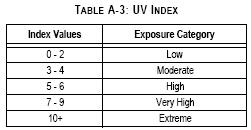
Evapotranspiration (ET)
Evapotranspiration (ET) is a measurement of the amount of
water vapor returned to the air in a given area. It combines the amount of water
vapor returned through evaporation (from wet surfaces) with the amount of water
vapor returned through transpiration (exhaling of moisture through plant
stomata) to arrive at a total. Effectively, ET is the opposite of rainfall, and
it is expressed in the same units of measure (millimeters).
The Vantage Pro2 uses air temperature, relative humidity,
average wind speed, and solar radiation data to estimate ET, which is calculated
once an hour on the hour. ET requires the optional solar radiation sensor.